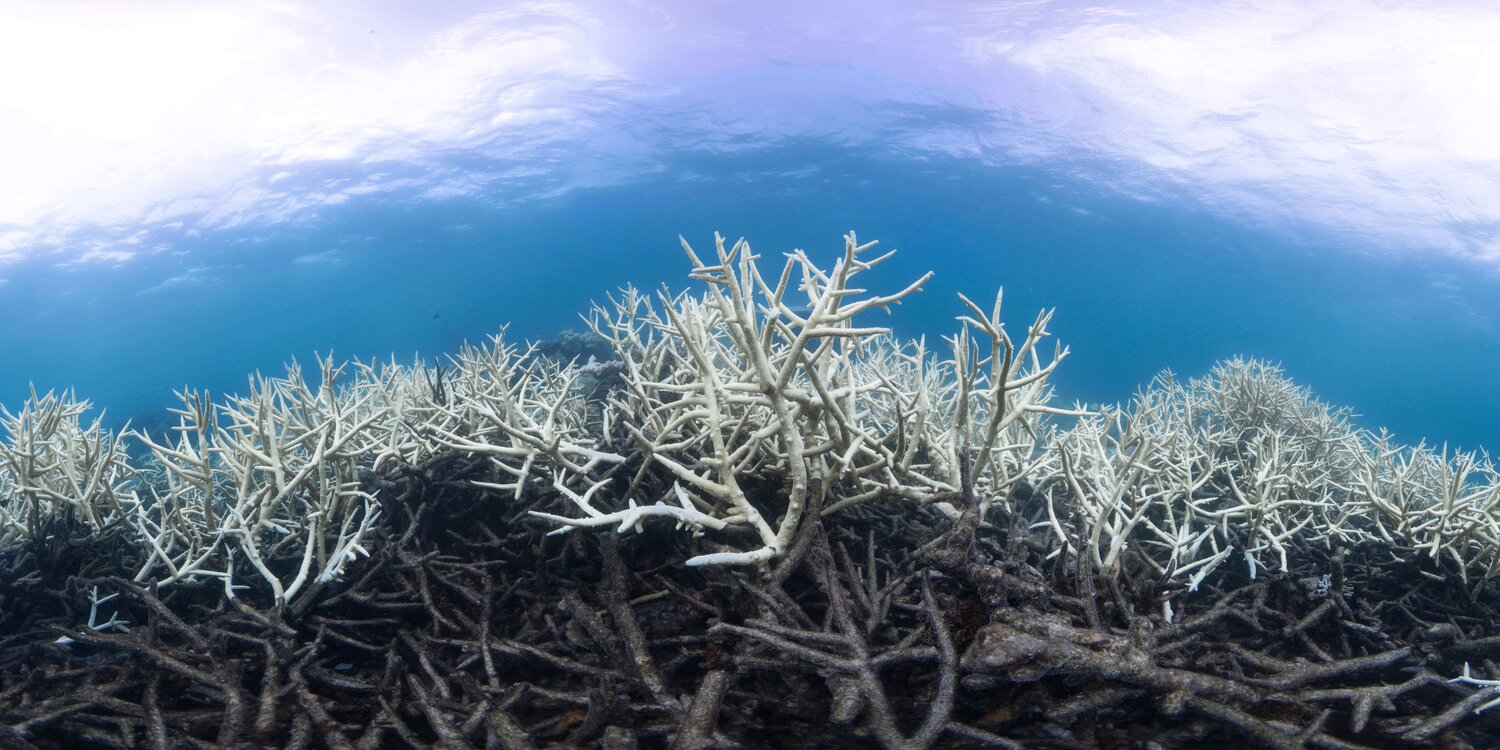Oceans under Climate Change
Oceans under Climate Change
Chan Man-yee Eliza
May 2023
Human activity has emitted huge amounts of greenhouse gases into the atmosphere, intensifying the greenhouse effect and causing more heat energy to accumulate on Earth. About 90% of the excess energy is absorbed by the oceans, causing the oceans to warm and severely affecting marine ecosystems. To cope with the warming environment, marine organisms need to migrate to cooler regions. Since the 1950s, marine species have been shifting poleward at an average rate of about 60 km per decade.
Since the 1980s, marine heatwaves have roughly doubled in frequency and become longer and more intense, causing recent mass mortalities in coral reefs, kelp forests, seagrasses and mangroves. Corals have high ecological value as coral reefs provide food and habitat for a variety of sea life. However, ocean warming causes bleaching and even death of corals. The Great Barrier Reef, for example, underwent mass bleaching four times between 2016 and 2022.
Ocean warming reduces the solubility of oxygen in seawater and strengthens upper ocean stratification, hence weakening the exchange of oxygen between the atmosphere and the ocean interior and reducing dissolved oxygen in the oceans. Ocean warming exacerbates deoxygenation in some regions, even leading to massive mortalities.
Approximately a quarter of all anthropogenic carbon dioxide emissions has been absorbed by the surface ocean. As the surface seawater absorbs more carbon dioxide, its pH value drops. This is a process called ocean acidification. Since the pre-industrial era, the pH value of global surface waters has decreased by 0.1, representing about a 26% increase in acidity. Ocean acidification severely affects the calcification process of marine organisms which require calcium for the build-up of shells and structures.
Sea level rise has accelerated due to thermal expansion of seawater and melting of glaciers and ice sheets on land. The average rate of global mean sea level rise has more than doubled between 1993 and 2022. Rising sea level impacts many coastal ecosystems, including mangroves and shallow coral reefs. It also makes low-lying coastal areas more prone to flooding. Freshwater for drinking and irrigation may be affected if seawater intrudes groundwater.
Ocean warming favours the development of tropical cyclones. The global proportion of major tropical cyclone occurrence has increased with global warming. Tropical cyclones bring high winds, heavy rain and storm surges. Against the backdrop of rising mean sea level, the threat of storm surge to coastal areas increases accordingly.
If global warming level exceeds 2°C by the end of this century, the risks of extinction, extirpation and ecosystem collapse are projected to escalate rapidly. Even if warming is limited to less than 2°C, coral reefs are still at risk of widespread decline, and marine biodiversity near the equator and in the Arctic is expected to decline. Climate change also alters many ecosystems in the oceans, impacting regional fisheries and the associated food supply.
To mitigate the impacts of climate change on the oceans, countries around the world must promptly step up their efforts to reduce carbon emissions.

Figure 1 Coral bleaching at Great Barrier Reef (Image credit: ©Underwater Earth XLCatlin Seaview Survey - Christophe Bailhache)